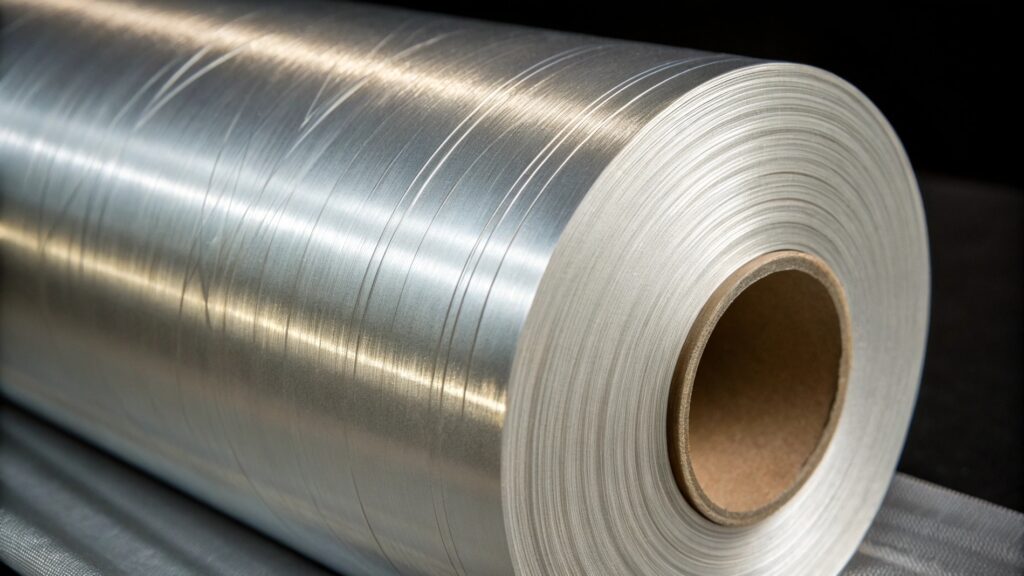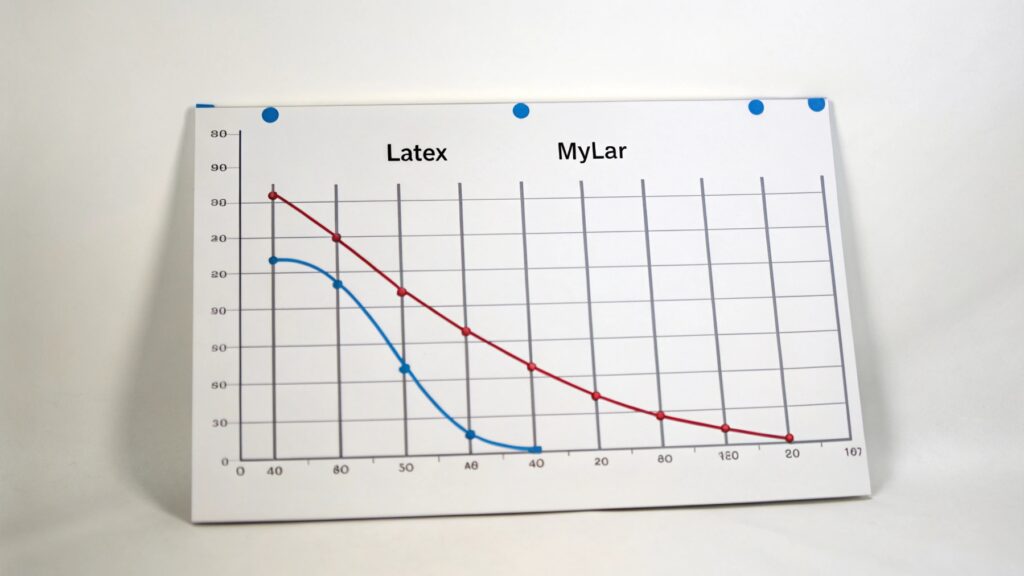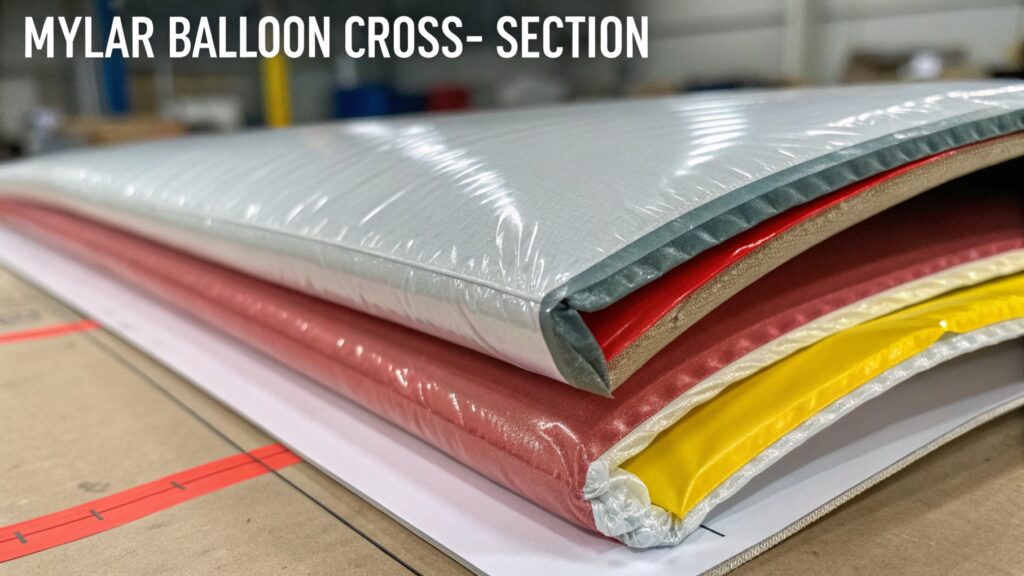Are Latex or Mylar Balloons better for helium retention?
Do you struggle with balloons deflating too quickly at your events? Tired of sad, droopy decorations? Let's dive into which balloon type keeps the party going longer!
Mylar balloons generally hold helium longer than latex balloons because their non-porous material prevents helium from escaping. Latex balloons are porous, allowing helium to diffuse through their surface more quickly.

As someone deeply involved in balloon manufacturing, I often see confusion about how different balloon materials impact float time. It's not just about the gas; it's about the barrier.
Which type of balloon holds helium longer, latex or Mylar?
Are you wondering which balloon will keep your decorations afloat for days, not just hours? It's a common question for anyone planning an event.
Mylar balloons hold helium significantly longer than latex balloons. This is because Mylar material is non-porous, while latex is porous, allowing helium to escape more readily.

From my experience, understanding the fundamental difference in material structure is key here. Think of it like this: latex, while strong, has a molecular structure that is more like a fine mesh. This allows tiny helium molecules to pass through over time. Mylar, on the other hand, is a type of plastic film. Its structure is much denser and less permeable. This difference in permeability is why Mylar consistently outperforms latex in helium retention1. When we manufacture balloons, we focus on creating the best possible barrier. For Mylar, this involves specialized layering processes. For latex, while we use high-quality natural rubber, the inherent properties of the material mean it will always be more porous than Mylar. This table summarizes the main points:
| Feature | Latex Balloons | Mylar Balloons |
|---|---|---|
| Material | Natural rubber | Metallized nylon/plastic |
| Porousness | Porous (microscopic holes) | Non-porous (dense structure) |
| Helium Escape | Faster (helium diffuses through) | Slower (helium is contained better) |
| Float Time | Hours to a day | Days to weeks |
| Best Use | Short-term events, general decor | Long-term displays, specific shapes |
For extended float times, are Mylar or latex balloons superior with helium?
Are you looking to make sure your balloon display lasts for days, not just for a few hours? Choosing the right balloon type is crucial for lasting impact.
For extended float times, Mylar balloons are superior with helium. Their sealed, non-porous construction significantly slows helium leakage compared to porous latex balloons, ensuring longer inflation.

When our customers ask for balloons that will last, my immediate recommendation is always Mylar. The science behind it is straightforward. Helium molecules are very small. Latex, being a natural polymer, has a molecular structure with tiny gaps. These gaps are invisible to the naked eye but are large enough for helium to slowly escape through diffusion. This is why a standard latex balloon filled with helium will start to visibly deflate within 8-12 hours and be completely down within a day or two. Mylar balloons are different. They are made from a thin, metallic-coated nylon or plastic film. This film is essentially non-porous. It creates an almost perfect barrier for the helium. The only way helium can escape is usually through a faulty valve or a pinhole, not through the material itself. Because of this, Mylar balloons can stay inflated for days, sometimes even weeks, depending on the size and environmental conditions. Our manufacturing processes for Mylar focus heavily on creating a completely sealed environment to maximize this benefit. This includes robust seam sealing and high-quality self-sealing valves.
In terms of helium retention, how do latex and Mylar balloons compare?
Do you need to know the exact differences in how long helium stays in different balloon types for your next big event? Understanding the comparison is key.
Latex balloons allow helium to escape faster due to their porous nature. Mylar balloons retain helium far longer because their non-porous, metallicized film creates a more effective barrier against gas diffusion.

From a manufacturing perspective, the difference in helium retention boils down to the material's permeability. When we produce latex balloons, we use natural rubber, which is elastic and versatile. However, at a microscopic level, this material has pores. These are not holes you can see, but rather spaces between the rubber molecules. Helium atoms are tiny and can gradually pass through these spaces. This process is called diffusion. For Mylar, we use a different approach. Mylar film is a type of stretched polyethylene terephthalate (PET) that is often coated with a thin layer of aluminum. This aluminum coating adds an extra layer of protection and significantly reduces permeability. The plastic itself is already much denser than latex. The combination creates an incredibly effective barrier. When we conduct quality control, we often perform permeability tests2. These tests consistently show that the rate of helium loss in Mylar is orders of magnitude lower than in latex. This inherent material difference, along with the precision in our sealing processes, is what makes Mylar the clear winner for long-term helium retention.
What are the key differences in helium longevity between Mylar and latex balloons?
Are you trying to figure out why some balloons last longer than others after being filled with helium? The answer lies in their fundamental design and materials.
The key difference in helium longevity is that Mylar balloons are made from a non-porous, multi-layered film that blocks helium molecules. Latex balloons are made from porous rubber, allowing helium to slowly escape through their surface.

In my years overseeing balloon production, I have seen how the choice of material directly impacts a balloon's lifespan. The primary differentiator is the molecular structure of the material itself. Think of latex like a sponge, albeit an extremely fine one. The natural rubber polymer chains have microscopic spaces between them. Helium, being an inert gas with very small atoms, can slowly squeeze through these spaces. This diffusion is why latex balloons begin to soften and eventually fall within 18-24 hours, even if they are tied perfectly. Mylar, on the other hand, is a composite material. It's typically a thin plastic film, often nylon, that's vacuum-metallized with a microscopic layer of aluminum. This metallization is crucial. The aluminum layer, combined with the dense plastic, creates a virtually impenetrable barrier for helium atoms. We spend a lot of time perfecting the sealing technology for Mylar balloons. This ensures that the gas stays trapped inside. The difference is stark: a latex balloon might float for a day, while a Mylar balloon can float for several weeks under ideal conditions. This longevity makes Mylar ideal for complex arrangements or events where sustained float time is essential.
Conclusion
Mylar balloons are superior to latex balloons for helium retention due to their non-porous structure. This fundamental difference in material composition ensures Mylar balloons float significantly longer, making them ideal for extended displays.
